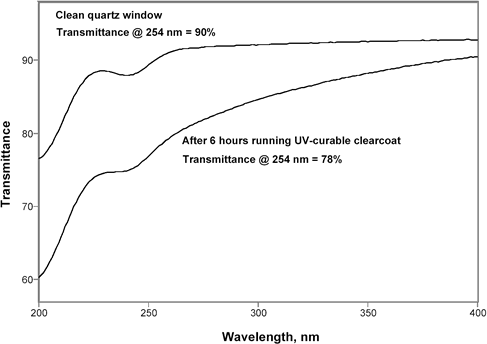Guide to UV Measurement
Lamp Housing
A lamp housing serves several purposes. It provides a stable geometry between the bulb and any reflector used. It also provides shielding to prevent the radiant energy from escaping to the local environment, thereby protecting workers from unnecessary exposure to the UV wavelengths, and to prevent physical contact of anything with the surface of the bulb that can easily reach temperatures in excess of 800-900°C. The high temperatures encountered require some form of air and/or water-cooling of the bulb that is also typically incorporated into the design of a lamp housing.
Although not always present, a barrier window is often used to prevent any chemical deposits from contaminating the surface of the bulb and reflector. Such deposits can lower the output from the bulb and reduce the reflectivity of the reflector. Most barrier windows are made of quartz because of its excellent UV transmission. However, the presence of an additional window presents another surface that must be kept clean from any chemical build up. The curve below shows a clean quartz window and the drop in transmittance that occurs after running a UV-curable clearcoat formulation for six hours.

Note that the initial transmittance through the quartz window at 254 nm is 90% but the transmittance drops to 78% over the course of the 6-hour run. Such a drop will eventually lead to cure problems if not corrected. Since the human eye is not sensitive to wavelengths in the UV region of the spectrum, visual inspection of the window alone will not reveal that there is a problem. Only through diligent use of radiometry can these problems be prevented.